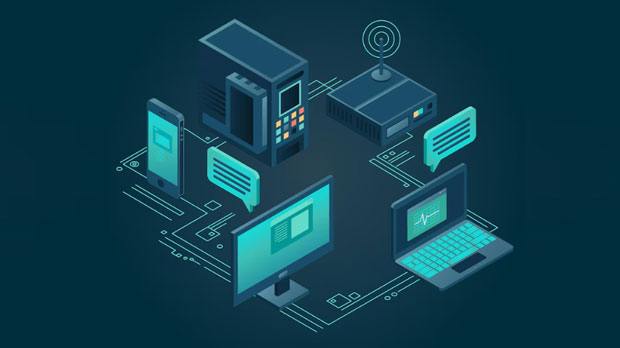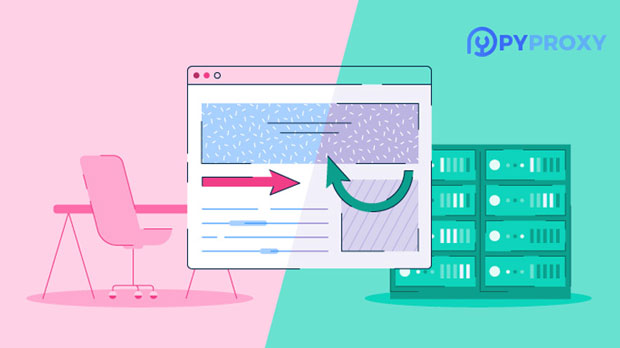When evaluating the cost-effectiveness of proxy ipv4, it’s essential to analyze several key factors, such as price, speed, security, and the variety of features that each provider offers. Proxy IPv4 refers to the use of an Internet Protocol (IP) address, which allows users to hide their actual IP, thus ensuring anonymity, privacy, and security during online activities. In this article, we will explore how to assess the cost-effectiveness of proxy IPv4 in terms of its benefits, performance, and pricing. 1. Understanding Proxy IPv4Before diving into cost-effectiveness, it’s essential to understand what proxy IPv4 is. Proxy servers act as intermediaries between a user and the internet. They route your internet requests through an intermediary server, masking your actual IP address and providing you with an alternative one. IPv4 (Internet Protocol version 4) is one of the most widely used versions of IP addresses and remains the backbone of internet connectivity. For businesses, proxies are commonly used for data scraping, accessing geo-restricted content, securing internal networks, or maintaining privacy while browsing. In essence, proxy IPv4 provides users with numerous benefits, such as improved security, privacy, and bypassing geographic restrictions.2. Factors to Evaluate Cost-Effectiveness of Proxy IPv4When evaluating the cost-effectiveness of Proxy IPv4, several factors need to be considered to ensure that you get the best value for your investment.2.1 Price and Subscription PlansPrice is always a major concern when choosing any service, and proxy IPv4 is no exception. Pricing models can differ significantly depending on the provider, the quality of service, and the features included in each package. Some providers offer monthly or yearly subscription plans with varying levels of access, while others may charge based on usage, bandwidth, or the number of IP addresses. It’s crucial to compare the prices of multiple providers to assess which offers the best value for money. While low-cost proxies may seem attractive, they might compromise on performance or security. Therefore, it’s essential to strike a balance between affordability and quality.2.2 Speed and PerformanceSpeed and performance are critical factors that directly affect the user experience when using proxy IPv4. In business scenarios like web scraping or accessing multiple geo-blocked websites, speed is essential for efficiency. Slow proxies can lead to significant delays, affecting the time it takes to complete tasks.A good proxy IPv4 provider should offer high-speed proxies with minimal latency. Many providers offer a trial period, which can be a great opportunity to evaluate their speed and performance before committing to a subscription.2.3 Security FeaturesSecurity is another key factor when assessing the cost-effectiveness of Proxy IPv4. Since proxies route your data through external servers, it is important to ensure that the provider has robust security measures in place to protect your data. Some proxies offer encryption, ensuring that your data remains secure while being transmitted over the internet. Providers with secure servers and a track record of maintaining user privacy are ideal, as they reduce the risk of data breaches. Make sure to inquire about the security measures offered before subscribing to a proxy service.2.4 Proxy Rotation and IP Pool SizeOne of the unique features of proxy services is the ability to rotate IP addresses. Proxy rotation allows users to switch between different IP addresses automatically, ensuring anonymity and preventing detection from websites or servers. The larger the IP pool a provider offers, the better the rotation and diversity of IP addresses.For businesses involved in data scraping or other activities requiring multiple IP addresses, having access to a large pool of rotating IPv4 proxies can improve performance and effectiveness. A bigger IP pool also reduces the chances of getting blocked or blacklisted by websites.2.5 Customer SupportCustomer support is essential when selecting a proxy IPv4 provider, as issues related to connectivity, security, and performance may arise during use. Reliable customer service ensures that users can quickly resolve any problems and receive assistance when needed.Look for providers that offer 24/7 customer support, preferably with multiple channels of communication, such as live chat, email, and phone support. This level of support can be invaluable in ensuring smooth and uninterrupted service.3. Assessing ROI (Return on Investment)While evaluating cost-effectiveness, it's important to assess the return on investment (ROI). The ROI in the context of proxy IPv4 refers to the value the service provides relative to its cost. If you are using proxy IPv4 for business purposes, such as data scraping, the increased efficiency and ability to bypass geo-restrictions should yield positive returns. On the other hand, personal users may see ROI in terms of increased privacy, security, and the ability to access restricted content. The goal is to ensure that the benefits derived from using proxy IPv4 justify the amount spent on the service. If the features, speed, and security meet your needs, the ROI should reflect the value provided.4. Comparing Different ProvidersTo effectively evaluate the cost-effectiveness of proxy IPv4, it’s essential to compare different providers based on the criteria mentioned above. Start by identifying a list of reliable and trusted providers in the market. Then, assess their features, pricing, speed, and customer service to determine which one aligns with your needs.Don’t hesitate to use free trials or explore demo versions of proxy services to get a firsthand experience before committing to any provider. Reading customer reviews and testimonials can also provide insight into the overall quality of the service.5. ConclusionEvaluating the cost-effectiveness of Proxy IPv4 involves balancing factors like price, speed, security, and the variety of features offered by different providers. By understanding the core elements of Proxy IPv4 and taking a comprehensive approach to assessment, users can find a service that delivers value for money while meeting their privacy, performance, and security needs.In the end, choosing the right Proxy IPv4 service is about striking the right balance between cost and functionality. Careful consideration and comparison will help you make a well-informed decision that benefits both your personal and business needs.
Aug 13, 2025



































































